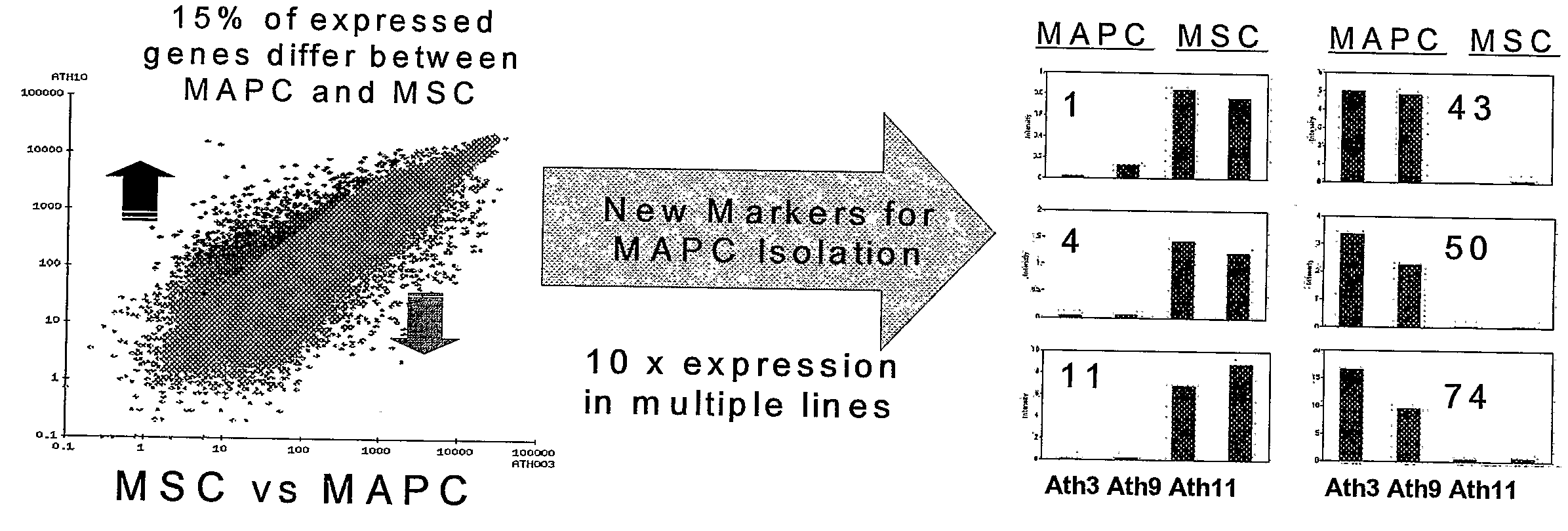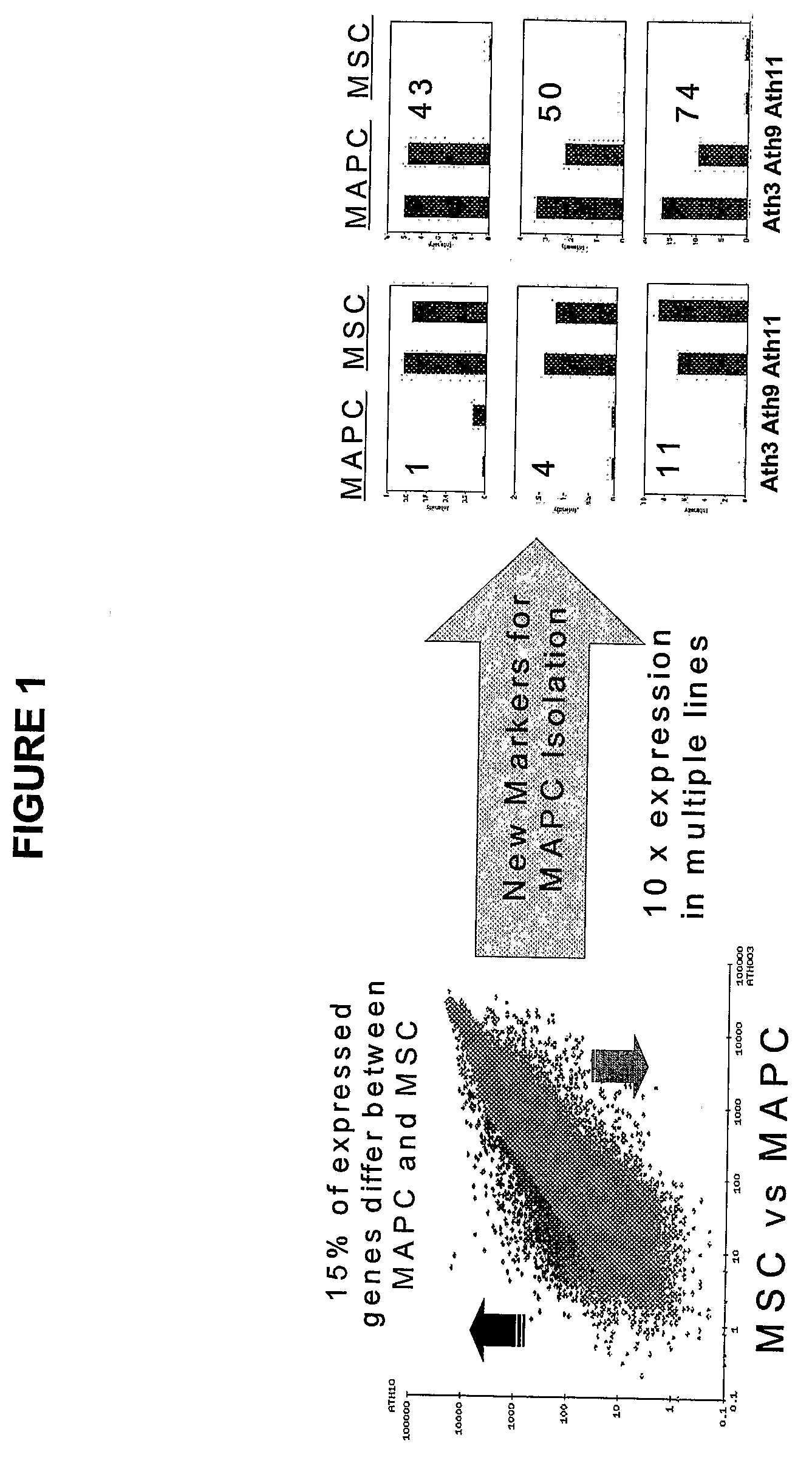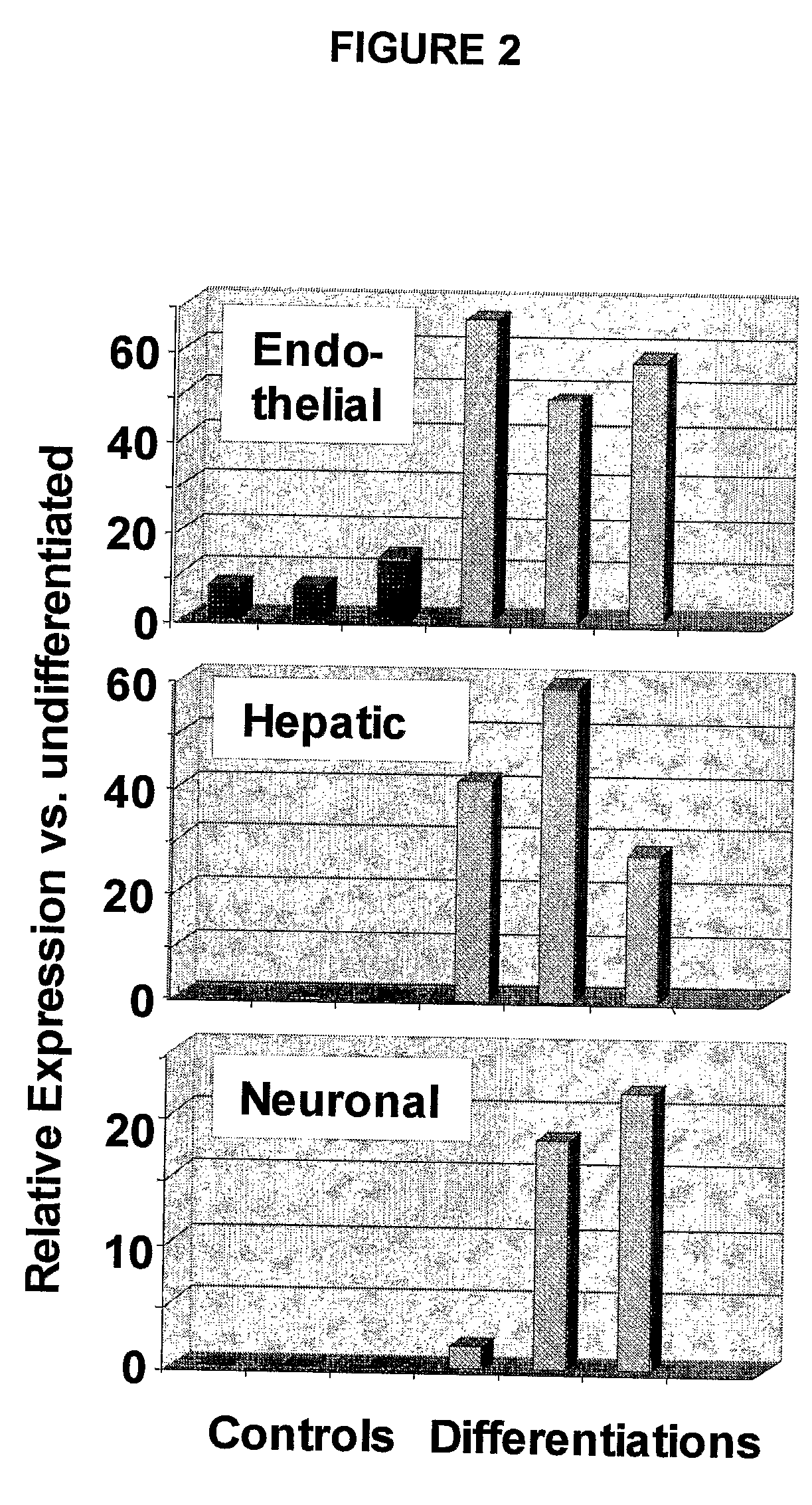Immunomodulatory Properties of Multipotent Adult Progenitor Cells and Uses Thereof
a multi-potent adult progenitor cell and immunomodulatory technology, applied in the field of immunomodulation by multi-potent adult progenitor cells, can solve the problems of complex therapeutic uses of transplantation, ineffectiveness, and inability to effectively treat host tissue, and achieve the effect of treating immune dysfunction
- Summary
- Abstract
- Description
- Claims
- Application Information
AI Technical Summary
Benefits of technology
Problems solved by technology
Method used
Image
Examples
example 1
Human MAPCs (from Bone Marrow Mononuclear Cells)
[0319]Bone marrow mononuclear cells were obtained from bone marrow aspirates from the posterior iliac crest of >80 healthy human volunteers. Ten to 100 cubic centimeters of bone marrow was obtained from each subject. Mononuclear cells (“MNCs”) were obtained from bone marrow by centrifugation over a Ficoll-Paque density gradient (Sigma Chemical Co., St Louis, Mo.). Bone marrow MNCs were incubated with CD45 and Glycophorin A microbeads (Miltenyi Biotec, Sunnyvale, Calif.) for 15 minutes and CD45+GlyA+ cells removed by placing the sample in front of a SuperMACS magnet. The eluted cells are 99.5% CD45−GlyA−.
[0320]Depletion of CD45+GlyA+ cells resulted in recovery of CD45−GlyA− cells which constituted approximately 0.05 to 0.10% of the total bone marrow mononuclear cells. Cells were selected that do not express the common leukocyte antigen CD45, or the erythroid precursor marker glycophorin-A (GlyA). CD45−GlyA− cells constitute 1 / 103 marrow...
example 2
Mouse MAPCs
[0321]All tissues were obtained according to guidelines from the University of Minnesota IACUC. BM mononuclear cells (BMMNC) were obtained by Ficoll Hypaque separation. BM was obtained from 5-6 week old ROSA26 mice or C57 / BL6 mice. Alternatively, muscle and brain tissue was obtained from 3-day old 129 mice. Muscles from the proximal parts of fore and hind limbs were excised and thoroughly minced. The tissue was treated with 0.2% collagenase (Sigma Chemical Co., St Louis, Mo.) for 1 hour at 37° C., followed by 0.1% trypsin (Invitrogen, Grand Island, N.Y.) for 45 minutes. Cells were then triturated vigorously and passed through a 70 μm filter. Cell suspensions were collected and centrifuged for 10 minutes at 1600 rpm. Brain tissue was dissected and minced thoroughly. Cells were dissociated by incubation with 0.1% trypsin and 0.1% DNAse (Sigma) for 30 minutes at 37° C. Cells were then triturated vigorously and passed through a 70 μm filter. Cell suspensions were collected an...
example 3
Rat MAPCs
[0323]BM and MNCs from Sprague Dawley, Lewis, or Wistar rats were obtained and plated under conditions similar to those described for mMAPCs.
PUM
| Property | Measurement | Unit |
|---|---|---|
| concentrations | aaaaa | aaaaa |
| concentrations | aaaaa | aaaaa |
| concentrations | aaaaa | aaaaa |
Abstract
Description
Claims
Application Information
 Login to View More
Login to View More - R&D
- Intellectual Property
- Life Sciences
- Materials
- Tech Scout
- Unparalleled Data Quality
- Higher Quality Content
- 60% Fewer Hallucinations
Browse by: Latest US Patents, China's latest patents, Technical Efficacy Thesaurus, Application Domain, Technology Topic, Popular Technical Reports.
© 2025 PatSnap. All rights reserved.Legal|Privacy policy|Modern Slavery Act Transparency Statement|Sitemap|About US| Contact US: help@patsnap.com



